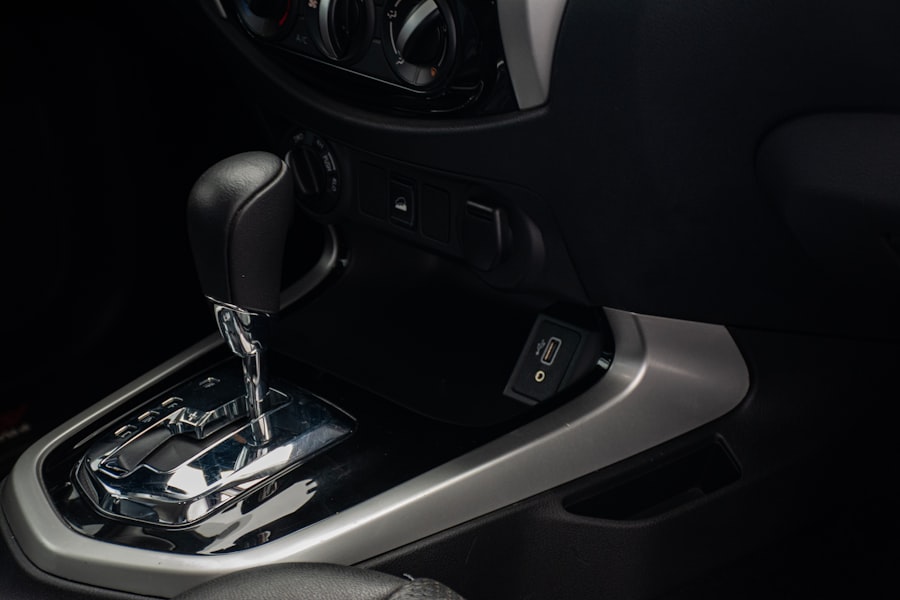In the digital age, the significance of Search Engine Optimization (SEO) for auto dealerships cannot be overstated. As consumers increasingly turn to the internet to research vehicles, compare prices, and read reviews, having a robust online presence becomes essential for attracting potential buyers. SEO serves as the backbone of this online visibility, ensuring that a dealership’s website ranks favorably in search engine results pages (SERPs).
When a potential customer types in queries related to car purchases, dealerships that have effectively implemented SEO strategies are more likely to appear at the top of the search results, thereby increasing their chances of being discovered. Moreover, SEO is not just about visibility; it also enhances credibility. A dealership that appears on the first page of search results is often perceived as more trustworthy and reputable than those buried deeper in the rankings.
This perception can significantly influence a consumer’s decision-making process. For instance, if a customer is considering two dealerships for a specific vehicle, they are more likely to visit the one that ranks higher in search results. Therefore, investing in SEO is not merely a marketing tactic; it is a fundamental component of a dealership’s overall business strategy aimed at driving traffic, generating leads, and ultimately increasing sales.
Key Takeaways
- SEO is crucial for auto dealerships to increase online visibility and attract potential customers.
- Identifying target keywords and phrases specific to auto dealerships is essential for effective SEO.
- Optimizing website content and meta data with relevant keywords can improve search engine rankings.
- Utilizing local SEO strategies such as local keywords and location-based content can help reach local customers.
- Creating high-quality and relevant content for auto dealership websites can enhance SEO and engage potential customers.
Identifying Target Keywords and Phrases for Auto Dealerships
The foundation of any successful SEO strategy lies in identifying the right keywords and phrases that potential customers are using to search for vehicles. For auto dealerships, this involves a thorough analysis of both short-tail and long-tail keywords. Short-tail keywords, such as “used cars” or “new trucks,” are highly competitive but can drive significant traffic.
In contrast, long-tail keywords like “best used SUVs under $20,000” or “certified pre-owned Honda Accord in [City Name]” may have lower search volumes but often yield higher conversion rates due to their specificity. To effectively identify these keywords, dealerships can utilize various tools such as Google Keyword Planner, SEMrush, or Ahrefs. These platforms provide insights into search volume, competition level, and related keywords.
Additionally, analyzing competitors’ websites can reveal valuable keyword opportunities that may have been overlooked. By focusing on a mix of both types of keywords, dealerships can create a balanced approach that captures a broad audience while also targeting specific niches that are more likely to convert into sales.
Optimizing Website Content and Meta Data for Search Engines

Once target keywords have been identified, the next step is to optimize website content and meta data accordingly. This process begins with incorporating keywords naturally into the website’s content, including product descriptions, blog posts, and landing pages. For instance, if a dealership specializes in electric vehicles, it should create informative content that addresses common questions about electric cars while seamlessly integrating relevant keywords throughout the text.
In addition to content optimization, meta data plays a crucial role in SEO. This includes title tags, meta descriptions, and header tags. Title tags should be concise yet descriptive, incorporating primary keywords to improve click-through rates from search results.
Meta descriptions should provide a compelling summary of the page’s content while also including relevant keywords. For example, a meta description for a page featuring hybrid vehicles might read: “Explore our extensive selection of fuel-efficient hybrid cars at [Dealership Name]. Find your perfect match today!” By optimizing both content and meta data, dealerships can enhance their visibility in search results and improve user engagement.
Utilizing Local SEO Strategies to Reach Local Customers
| Local SEO Strategy | Metrics |
|---|---|
| Google My Business | Number of views, clicks, and calls |
| Local Keywords | Ranking on local search results |
| Local Citations | Number of online mentions and listings |
| Local Reviews | Number of positive reviews and ratings |
| Local Backlinks | Number of local websites linking to your site |
For auto dealerships, local SEO is particularly vital as most customers prefer to shop within their geographical area. Implementing local SEO strategies involves optimizing the dealership’s online presence to attract local customers effectively. One of the most critical components of local SEO is creating and optimizing a Google My Business (GMB) listing.
This free tool allows dealerships to manage their online information across Google, including their address, phone number, hours of operation, and customer reviews. A well-optimized GMB listing can significantly enhance local visibility and drive foot traffic to the dealership. In addition to GMB optimization, local citations—mentions of the dealership’s name, address, and phone number (NAP) on other websites—are essential for building local authority.
Ensuring consistency across all platforms is crucial; discrepancies can confuse search engines and potential customers alike. Furthermore, incorporating location-based keywords into website content can help improve local search rankings. For example, using phrases like “best car dealership in [City Name]” or “affordable SUVs near [Neighborhood]” can attract local customers actively searching for vehicles in their area.
Creating High-Quality and Relevant Content for Auto Dealership Websites
Content is king in the realm of SEO, and for auto dealerships, producing high-quality and relevant content is paramount. This content can take various forms, including blog posts, vehicle reviews, buying guides, and video content showcasing new arrivals or dealership events. By providing valuable information that addresses customer pain points or interests—such as tips for financing a car or comparisons between different models—dealerships can position themselves as industry experts while also improving their search engine rankings.
Moreover, incorporating multimedia elements such as images and videos can enhance user engagement and dwell time on the website. For instance, creating video walkthroughs of popular models or virtual tours of the dealership can captivate potential buyers and encourage them to explore further. Additionally, regularly updating the website with fresh content signals to search engines that the site is active and relevant, which can positively impact rankings over time.
Leveraging Social Media and Online Reviews for SEO

Social media platforms serve as powerful tools for enhancing SEO efforts for auto dealerships. By maintaining an active presence on platforms like Facebook, Instagram, and Twitter, dealerships can engage with their audience and drive traffic back to their websites. Sharing informative content, promotional offers, and customer testimonials can foster community engagement while also improving brand visibility.
Furthermore, social media posts that include links back to the dealership’s website can contribute to increased referral traffic—a factor that search engines consider when ranking sites. Online reviews also play a critical role in shaping a dealership’s online reputation and influencing SEO performance. Positive reviews on platforms like Google My Business or Yelp not only enhance credibility but also contribute to local SEO rankings.
Encouraging satisfied customers to leave reviews can create a positive feedback loop that attracts new customers while boosting search visibility. Additionally, responding to reviews—both positive and negative—demonstrates customer service commitment and can further enhance the dealership’s reputation in the eyes of potential buyers.
Implementing Technical SEO Best Practices for Auto Dealerships
Technical SEO encompasses various behind-the-scenes elements that ensure a website is optimized for search engines. For auto dealerships, implementing technical best practices is crucial for improving site performance and user experience. Key aspects include optimizing site speed, ensuring mobile-friendliness, and implementing secure HTTPS protocols.
A fast-loading website not only enhances user experience but also positively impacts search rankings; Google has indicated that site speed is a ranking factor. Another critical component of technical SEO is ensuring proper site structure and navigation. A well-organized website with clear categories and subcategories allows both users and search engines to navigate easily.
Implementing schema markup—structured data that helps search engines understand the content better—can also enhance visibility in SERPs by enabling rich snippets that display additional information about vehicles directly in search results. For example, including schema markup for vehicle specifications can help potential buyers find relevant information quickly.
Measuring and Analyzing SEO Performance for Auto Dealerships
To gauge the effectiveness of SEO efforts, auto dealerships must regularly measure and analyze their performance using various metrics and tools. Google Analytics is an invaluable resource for tracking website traffic, user behavior, and conversion rates. By analyzing data such as organic traffic sources, bounce rates, and average session duration, dealerships can gain insights into which strategies are working and which areas require improvement.
Additionally, monitoring keyword rankings through tools like SEMrush or Moz can provide valuable information about how well the dealership’s website is performing in search results over time. Keeping an eye on competitors’ performance can also offer insights into market trends and potential opportunities for improvement. By continuously measuring and analyzing SEO performance metrics, auto dealerships can adapt their strategies accordingly to ensure sustained growth in visibility and sales over time.



